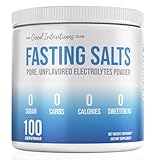LDL, the so-called “Bad Cholesterol” is not really cholesterol. LDL stands for Low-Density Lipoprotein.
Role of Lipoproteins
Whenever we eat fat or oil in our meal, they have to be transported with the blood. But blood is similar to water, and we know that water and oil do not mix. To be transported, the fat and oil have to be packaged such that it can be carried in the bloodstream. Enter the lipoprotein. Lipoproteins have a water-loving (hydrophilic) outside part that mixes well with the blood and a fat-loving (hydrophobic) inside part that carries the fat.

Separating the Lipoproteins
Lipoproteins in the blood have been known since the first quarter of the 20th century. In 1955 John Gofman and Frank Lingren, two physical chemists at Donner Laboratory at Berkeley, used ultracentrifugation for the study of lipoproteins. “The centrifuge works using the sedimentation principle, where the centrifugal acceleration causes denser substances and particles to move outward in the radial direction. At the same time, less dense objects are displaced and move to the center.”

Using the analytical ultracentrifuge, John Gofman was able to separate the different classes of lipoproteins into High-Density Lipoprotein (HDL), Intermediate Density Lipoprotein (IDL), Low-Density Lipoprotein (LDL), and Very Low-Density Lipoprotein (VLDL). Afterward, based on John Gofman’s interviews of patients who had a history of heart disease, John Gofman was able to associate an elevated level of HDL to a lower risk of heart disease and a higher level of LDL to atherosclerosis to the development of cardiac events.
LDL Recommendations Thru the Years
After separating the lipoproteins, it was established at that time that a high LDL is linked to a higher risk of a heart attack. The serum LDL has been used as the guide to lessen the risk of developing a heart attack. The National Cholesterol Education Program (NCEP) first brought out the Adult Treatment Panel (ATP) in 1988 and identified the LDL as the primary target and recommended an optimal level of 130 mg/dl for LDL. Updated guidelines for LDL were made in 1993, 2001, and 2004, have further lowered this therapeutic goal for LDL that is still the primary target of treatment. Multiple medications were developed to decrease LDL. One of them is Lovastatin (Lipitor) that became the most successful drug in the history of the pharmaceutical industry.
LDL levels Not Needed Anymore
However, in 2013, new guidelines from the American College of Cardiology (ACC) and American Heart Association (AHA) developed in conjunction with the National Heart, Lung, and Blood Institute (NHLBI), a new set of guidelines. This time they removed the “recommended LDL- and non-HDL–cholesterol targets, specifically those that ask physicians to treat patients with cardiovascular disease to less than 100 mg/dL or the optional goal of less than 70 mg/dL. According to the expert panel, there is just no evidence from randomized, controlled clinical trials to support treatment to a specific target. As a result, the new guidelines make no recommendations for specific LDL-cholesterol or non-HDL targets for primary prevention (prevent illness before it occurs) and secondary prevention (reduce the impact of the disease) of atherosclerotic cardiovascular disease.”
The Good and the Bad Subtypes of LDL
It turns out, LDL is not just one but have different subtypes. The large fluffy LDL, and 3 dense LDL divided into a medium LDL, small LDL, and very small dense LDL. The large fluffy LDL is what goes up when you eat saturated fats like butter, eggs, and meat. It is NOT related to coronary progression. However, the small dense LDL is the one that is associated with heart disease. The low, dense LDL can easily insert itself in the inner lining of the blood vessel (endothelium). This information about the different subclasses of LDL is not new. It has been presented in this report in 1982.
It is not surprising then that in spite of all the efforts and billions of dollars worth of prescriptions to lower the LDL have not been successful in decreasing the heart attacks and strokes. Statins do not reduce the small dense LDL but actually increases it.
Therefore the goal should be to lower the small dense LDL. Talk to your doctors about getting the LDL subfractions to assess your risk better.
Related Readings:
- The Deadliest Diseases Associated with Metabolic Syndrome
- Atrial Fibrillation and Metabolic Syndrome
- How Effective are Drugs that Increase HDL?
- Can You Be in Heart Failure Now?
- What Starts Atherosclerosis?
- The Magical Endothelium
- Understanding Heart Failure Treatment
- Coronary Stents and Blood Thinners
- How Effective is Quitting Cigarettes?
- Hair Loss and Heart Attacks
- The Real Effect of Statins on Heart Disease
- Erectile Dysfunction is a Sign of Coronary Artery Disease
References:
- Gofman J, Lindgren F, Elliott H. Ultracentrifugal studies of lipoproteins of human serum. J. Biol. Chem. 1949;179:973–978. [PubMed]
- Bantwal, G., George, B. Low-density lipoprotein-cholesterol target: Changing goalposts. Indian J Endocrinol Metab. 2012 Dec; 16(Suppl 2): S233–S235.
-
Dusty Punch Cards and an Eternal Enigma: High-Density Lipoproteins and Atherosclerosis – Scientific Figure on ResearchGate. Available from: https://www.researchgate.net/figure/John-Gofman-in-front-of-an-analytical-ultracentrifuge-at-the-Donner-Laboratory_fig1_261293191 [accessed 31 Dec, 2019]
© 2019 Asclepiades Medicine, LLC All Rights Reserved
DrJesseSantiano.com does not provide medical advice, diagnosis or treatment
Fasting for Breakthrough and Deliverance
47% OffDiscover more from Don't Get Sick!
Subscribe to get the latest posts sent to your email.



















